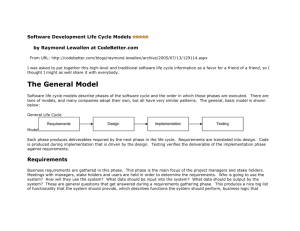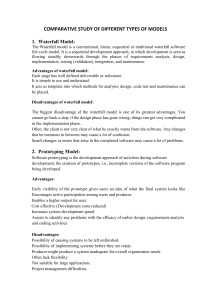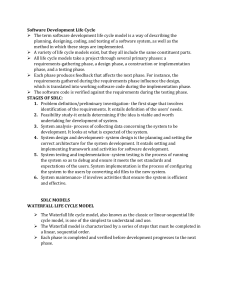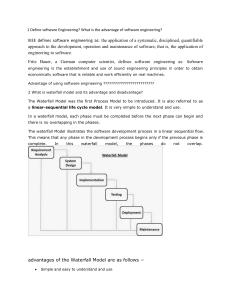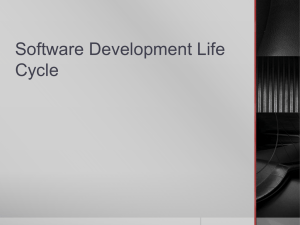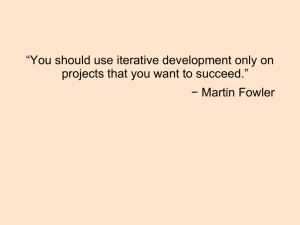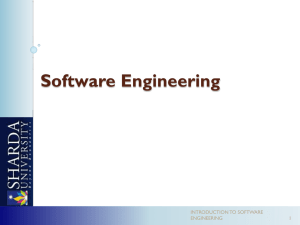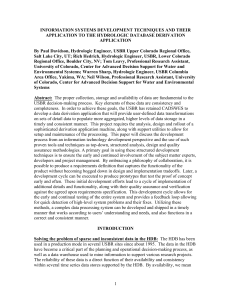SDLC
advertisement
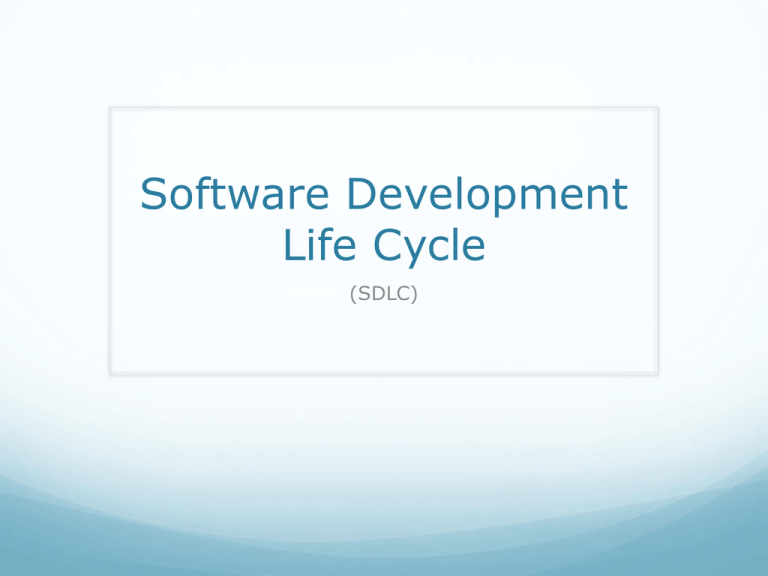
Software Development Life Cycle (SDLC) General Model Software life cycle models describe phases of the software cycle and the order in which those phases are executed. There are tons of models, and many companies adopt their own, but all have very similar patterns. The general, basic model is shown below: Each phase produces deliverables required by the next phase in the life cycle. Requirements are translated into design. Code is produced during implementation that is driven by the design. Testing verifies the deliverable of the implementation phase against requirements. Though the information listed here is focused more on the development of large software applications, the principals still apply to our project work. General Model - Requirements This is the phase where we determine the requirements for the software: Who is going to use the system? How will they use the system? What data should be input into the system? What data should be output by the system? This produces a nice big list of functions that the system should provide, business logic that processes data, what data is stored and used by the system, and how the user interface should work. The overall result of the requirements phase is an understanding of the system as a whole and how it performs, not how it is actually going to do it. General Model - Design The software system design is produced from the results of the requirements phase. Architects have the ball in their court during this phase and this is the phase in which their focus lies. This is where the details on how the system will work is produced. Architecture, including hardware and software, communication, software design are all part of the deliverables of a design phase. General Model - Implementation Code is produced from the deliverables of the design phase during implementation, and this is the longest phase of the software development life cycle. For a developer, this is the main focus of the life cycle because this is where the code is produced. Implementation my overlap with both the design and testing phases. Many tools exists (CASE tools) to actually automate the production of code using information gathered and produced during the design phase. General Model - Testing During testing, the implementation is tested against the requirements to make sure that the product is solves the needs identified during the requirements phase. Unit tests and system/acceptance tests are done during this phase. Unit tests act on a specific component of the system, while system tests act on the system as a whole. In a nutshell, that is a very basic overview of the general Software Development Life Cycle model. Variations on the general model are common in the industry. Waterfall Model Waterfall Model This is the most common and classic of life cycle models, also referred to as a linear-sequential life cycle model. It is very simple to understand and use. In a waterfall model, each phase must be completed in its entirety before the next phase can begin. At the end of each phase, a review takes place to determine if the project is on the right path and whether or not to continue or discard the project. Unlike the general model, phases do not overlap in a waterfall model. V-Shaped Model V-Shaped Model Just like the waterfall model, the V-Shaped life cycle is a sequential path of execution of processes. Each phase must be completed before the next phase begins. Testing is emphasized in this model more so than the waterfall model though. The testing procedures are developed early in the life cycle before any coding is done, during each of the phases preceding implementation. Incremental Model Incremental Model The incremental model is an intuitive approach to the waterfall model. Multiple development cycles take place here, making the life cycle a “multi-waterfall” cycle. Cycles are divided up into smaller, more easily managed iterations. Each iteration passes through the requirements, design, implementation and testing phases. A working version of software is produced during the first iteration, so you have working software early on during the software life cycle. Subsequent iterations build on the initial software produced during the first iteration. Spiral Model Spiral Model The spiral model is similar to the incremental model, with more emphases placed on risk analysis. The spiral model has four phases: Planning, Risk Analysis, Engineering and Evaluation. A software project repeatedly passes through these phases in iterations (called Spirals in this model). The baseline spiral, starting in the planning phase, requirements are gathered and risk is assessed. Each subsequent spirals builds on the baseline spiral.
